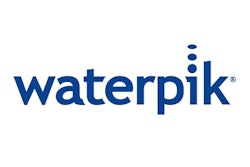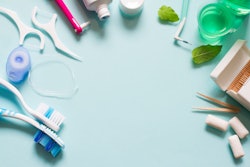Dental irrigation jets can play a key role in eliminating harmful oral biofilms, according to a study by researchers from the University of Southern California (USC) School of Dentistry.
The study, conducted by biofilm expert J. William Costerton, Ph.D., and published this month in the Compendium of Continuing Education in Dentistry, found that dental water jet systems effectively remove 99.9% of harmful plaque biofilms from teeth, a press release stated.
Costerton used a scanning electron microscope (SEM) to evaluate the effectiveness of a Waterpik dental water jet at removing plaque biofilm. Teeth from patients with extensive gum disease and plaque buildup were extracted and then processed to accelerate additional plaque biofilm growth. The teeth were then subjected to a three-second treatment with a dental water jet and viewed with the SEM microscope.
"The results were almost impossible for me to believe the first time through," said Costerton, the founding director of the USC Center for Biofilms, in the press release. "One of the difficulties with plaque biofilm is that you really can't see it, it's clear. So we didn't have visual evidence of complete removal. But now with these direct methods, the SEM, you apply a dental water jet to plaque on the surface of a tooth and you look with a scanning scope and it's gone. It's simply gone. And that's unequivocal and unarguable."
Plaque is now understood by the dental profession to be a biofilm, a collection of bacteria that form complex, interactive colonies. Within these colonies thousands of disease-causing bacteria grow, communicate, and thrive. Plaque biofilm forms throughout the mouth, particularly in hard-to-reach areas between teeth and below the gum line, and it is difficult to remove. The removal of plaque biofilm is the basis of all preventive dental health, as plaque is the leading cause of tooth decay and gum disease and eventually jaw bone disease.
This new finding builds on recent studies that demonstrate the Waterpik dental water jet is an easy and effective alternative for those who do not floss for improving gum health and reversing gingivitis, added Parish Sedghizadeh, D.D.S., director of the USC Center for Biofilms, in the release.
Copyright © 2009 DrBicuspid.com



















